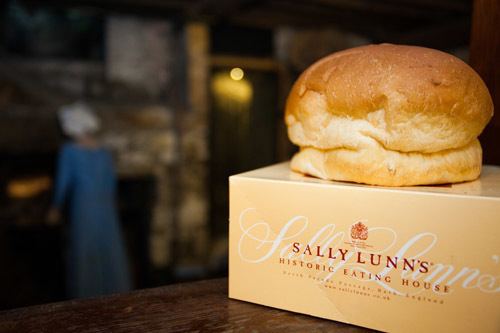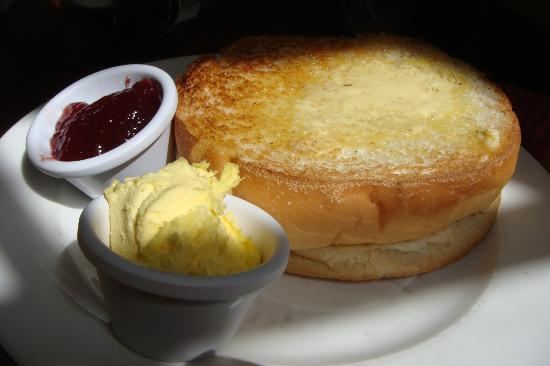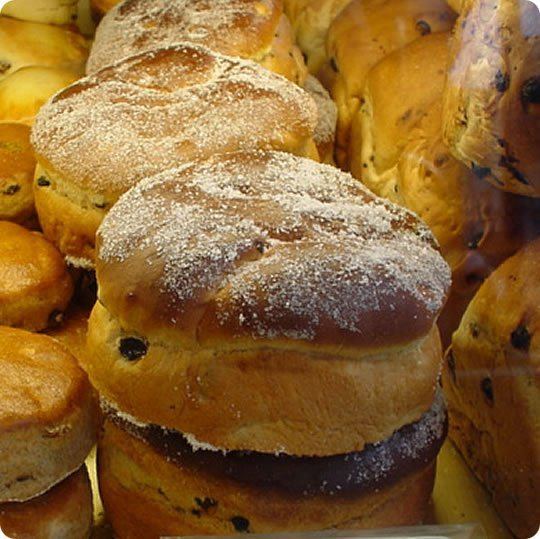Variations Solilemmes | Region or state West Country | |
 | ||
Alternative names Sally Lun, or Lund, Solemena, soel leme Similar Bath bun, Boston bun, London bun, Bath Oliver, Chelsea bun | ||
Sally lunn bun bath uk
A Sally Lunn is a large bun or teacake made with a yeast dough including cream and eggs, similar to the sweet brioche breads of France. Served warm and sliced, with butter, it was first recorded in 1780 in the spa town of Bath in southwest England. The same name has been applied to various unrelated breads in the US since the early 20th century.
Contents
- Sally lunn bun bath uk
- June the homemaker sally lunn buns edition
- Origins
- Sally Lunns house
- In popular culture
- References

June the homemaker sally lunn buns edition
Origins

The origins of the Sally Lunn are shrouded in myth - one theory is that it is an anglicisation of "Sol et lune" (French for "sun and moon"), representing the golden crust and white base/interior. The Sally Lunn Eating House claims that the recipe was brought to Bath in the 1680s by a Huguenot refugee called Solange Luyon, who became known as Sally Lunn, but there is no evidence to support this theory.

There is a passing mention of "Sally Lunn and saffron cake" in a 1776 poem about Dublin by the Irish poet William Preston. The first recorded mention of the bun in Somerset is as part of a detox regime in Philip Thicknesse's 1780 guidebook to taking the waters at Bath. Thicknesse describes how he would daily see visitors drinking 2-3 pints of Bath water and then "sit down to a meal of Sally Lunns or hot spungy rolls, made high by burnt butter!" He recommends against the practice as his brother died after this kind of breakfast - "Such a meal, few young men in full health can get over without feeling much inconvenience".

There is little historical evidence for Sally Lunn as a person. The Gentleman's Magazine of 1798 uses Sally Lunn as an example during a discussion of foods named after people - 'a certain sort of hot rolls, now, or not long ago, in vogue at Bath, were gratefully and emphatically styled "Sally Lunns"'. But it is not until 1827 that a historical person is described by a correspondent of William Hone using the pseudonym "Jehoiada", who says she had sold the buns on the street "about thirty years ago". A baker called Dalmer had bought out her business and made it highly successful after he composed a special song for the vendors, who sold the buns from mobile ovens. The earliest evidence of commercial production is an 1819 advert for the Sally Lunn "cakes" sold by W. Needes of Bath, bread and biscuit maker to the Prince Regent.

The Sally Lunn is mentioned alongside muffins and crumpets by Charles Dickens in The Chimes (1845). The same year Eliza Acton gave a recipe in Modern Cookery for Private Families, describing it as a version of "Solimemne - A rich French breakfast cake, or Sally Lunn". Solilemmes is a kind of brioche that is served warm and popularised by the great Parisian chef Marie-Antoine Carême in a book of 1815. Carême claimed the "solilem" originated in Alsace but there is no evidence to support that claim; he may have taken the idea from contacts in Bath and then tried to disguise the origins of a recipe that came from France's great enemy.
Sally Lunn's house
The medieval building now known as the Sally Lunn Eating House is at 4 North Parade Passage (formerly Lilliput Alley) in Bath (51.3808°N 2.3582°W / 51.3808; -2.3582 (Sally Lunn Eating House)). The site was originally occupied by the south range of Bath Abbey and the lowest floor level dates to the reconstruction of the abbey after a great fire in 1137. The masonry oven in the basement dates from this time. After the Reformation it came into the hands of the Colthurst family of Wardour Castle who sold it to John Hall of Bradford on Avon in 1612. In 1622 Hall leased the site to George Parker, a carpenter who built the current house. The Hall estate was later acquired by the 2nd Duke of Kingston, who sold the house to William Robinson in 1743. There may have been baking on a small scale during the 1700s but it only became the main commercial use of the building around the turn of the century.
The building was acquired in the 1930s by Marie Byng-Johnson who opened it as a tea-room specializing in Sally Lunn buns, promoted with a story that she had discovered an ancient document in a secret panel above the fireplace explaining that Mlle. Sally Lunn was a young French Huguenot refugee who brought the recipe to Bath around 1680. The building is now Grade II* listed.
In popular culture
Sally Lunn figures in Gilbert & Sullivan's comic opera The Sorcerer:
CHORUS:Now to the banquet we press; now for the eggs and the ham;Now for the mustard and cress, and now for the strawberry jam!Now for the tea of our host, now for the rollicking bun,Now for the muffin and toast, now for the gay Sally Lunn!WOMEN: The eggs and the ham, and the strawberry jam!MEN: The rollicking bun, and the gay Sally Lunn! The rollicking, rollicking bun!